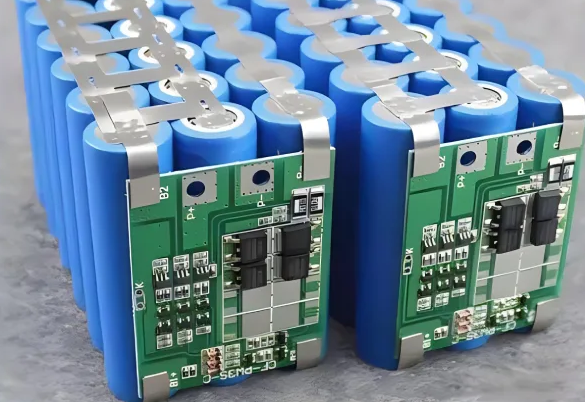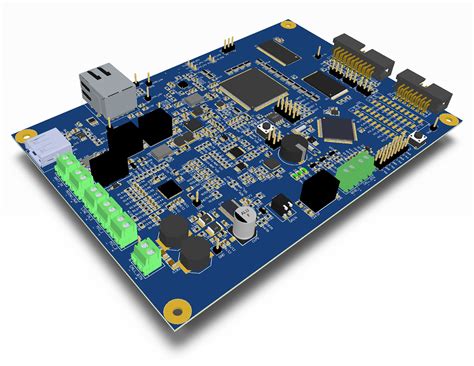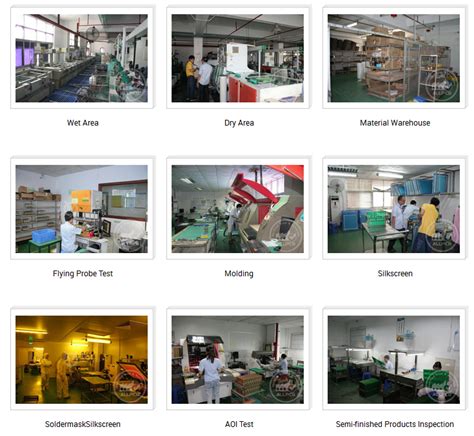PCB Packaging for Lithium Batteries: Design, Materials, and Manufacturing Considerations
Abstract
This paper explores the critical aspects of PCB (Printed Circuit Board) packaging for lithium batteries, a technology that has become increasingly important in modern electronics. We examine the design principles, material selection, thermal management, safety considerations, and manufacturing processes involved in creating effective PCB packages for lithium battery applications. The discussion covers various lithium battery types (including Li-ion, LiPo, and LiFePO4) and their specific packaging requirements, along with emerging trends in the field.
1. Introduction
The rapid evolution of portable electronics, electric vehicles, and renewable energy storage systems has created growing demand for efficient and safe lithium battery packaging solutions. PCB packaging offers numerous advantages for lithium battery integration, including compact form factors, excellent electrical connectivity, and enhanced thermal management capabilities.
PCB packaging for lithium batteries refers to the design and implementation of printed circuit boards that physically house, electrically connect, and protect lithium battery cells while providing necessary monitoring and control circuitry. This packaging approach has become particularly valuable in applications requiring:
- High energy density in constrained spaces
- Precise battery management
- Robust protection circuits
- Efficient thermal dissipation
- Reliable mechanical support

2. Fundamental Design Considerations
2.1 Electrical Requirements
PCB packaging for lithium batteries must address several critical electrical design factors:
Current Carrying Capacity:
- Trace width calculations based on expected current loads
- Use of thick copper layers (2oz or more) for high-current paths
- Proper via sizing and placement for current distribution
Voltage Isolation:
- Adequate creepage and clearance distances
- Proper insulation between battery terminals and other components
- Consideration of potential voltage transients
Signal Integrity:
- Separation of high-current and sensitive signal traces
- Proper grounding strategies for battery monitoring circuits
- Noise reduction techniques for accurate voltage/current sensing
2.2 Mechanical Design
The mechanical aspects of PCB battery packaging include:
Structural Support:
- Board thickness selection based on mechanical stress requirements
- Reinforcement techniques for areas subject to vibration or flexing
- Integration of mounting features for battery cells
Form Factor Optimization:
- Space-efficient layouts for compact devices
- Flexible PCB options for unconventional shapes
- Multi-board designs for complex systems
Environmental Protection:
- Conformal coating selection for moisture resistance
- Encapsulation options for harsh environments
- Sealing techniques for water-resistant applications
3. Material Selection
3.1 PCB Substrate Materials
The choice of PCB substrate significantly impacts battery packaging performance:
FR-4:
- Most common and cost-effective
- Moderate thermal performance
- Suitable for many standard applications
High-Tg Materials:
- Better performance at elevated temperatures
- Reduced thermal expansion issues
- Preferred for high-power or high-temperature environments
Metal Core PCBs:
- Excellent thermal dissipation
- Aluminum or copper core options
- Ideal for high-power battery applications
Flexible Substrates:
- Polyimide or PET-based materials
- Enables unconventional form factors
- Useful for wearable or space-constrained devices

3.2 Conductive Materials
Copper:
- Standard choice for traces and planes
- Various weights available (typically 1oz to 4oz)
- May require surface treatments for corrosion resistance
Surface Finishes:
- HASL (Hot Air Solder Leveling)
- ENIG (Electroless Nickel Immersion Gold)
- OSP (Organic Solderability Preservatives)
- Immersion Silver
Specialty Conductors:
- High-conductivity pastes for printed electronics
- Embedded bus bars for ultra-high current applications
4. Thermal Management
Effective thermal management is crucial for lithium battery safety and longevity:
4.1 Heat Dissipation Techniques
PCB-Based Solutions:
- Thermal vias for heat transfer between layers
- Copper pours as heat spreaders
- Integrated heat sinks or thermal pads
Material Enhancements:
- High thermal conductivity substrates
- Thermally conductive adhesives and interface materials
- Phase change materials for thermal buffering
4.2 Temperature Monitoring
Integrated Sensors:
- NTC thermistors placed near battery cells
- Digital temperature sensors with I2C/SPI interfaces
- Distributed sensing for large battery arrays
Thermal Design Validation:
- Thermal imaging during development
- Computational fluid dynamics (CFD) simulations
- Worst-case scenario testing
5. Battery Management System (BMS) Integration
PCB packaging typically incorporates various BMS functions:
5.1 Protection Circuits
Overcharge/Overdischarge Protection:
- Voltage monitoring ICs
- MOSFET-based disconnect switches
- Redundant protection mechanisms
Current Protection:
- Shunt resistors for current measurement
- Fuses and PTC devices
- Fast-acting electronic protection
Cell Balancing:
- Passive balancing circuits
- Active balancing topologies
- Switched capacitor techniques
5.2 Monitoring and Communication
State-of-Charge Estimation:
- Coulomb counting implementations
- Voltage-based SOC algorithms
- Advanced machine learning approaches
Communication Interfaces:
- SMBus for smart batteries
- CAN bus for automotive applications
- Wireless options for IoT devices

6. Manufacturing Processes
6.1 PCB Fabrication
Standard Processes:
- Multilayer board lamination
- Precision drilling and routing
- Solder mask application
Specialty Techniques:
- Embedded component technology
- Heavy copper processing
- Flexible-rigid combinations
6.2 Assembly Considerations
Component Placement:
- High-voltage spacing requirements
- Thermal management component positioning
- Mechanical stress minimization
Soldering Processes:
- Reflow profile optimization for battery connections
- Selective soldering for mixed-technology boards
- Low-stress attachment methods for battery cells
Testing and Validation:
- In-circuit testing
- Functional testing under load
- Environmental stress screening
7. Safety Standards and Compliance
PCB battery packaging must adhere to numerous safety standards:
Key Standards:
- UL 2054 (Household and Commercial Batteries)
- IEC 62133 (Safety of Secondary Lithium Cells)
- UN 38.3 (Transportation Testing)
- Relevant sections of IPC standards
Design for Safety:
- Redundant protection features
- Fail-safe mechanisms
- Proper isolation and insulation
8. Emerging Trends and Future Developments
Advanced Materials:
- Graphene-enhanced conductors
- Nanocomposite substrates
- Self-healing materials
Integration Technologies:
- 3D packaging approaches
- Chip-on-board solutions
- System-in-package concepts
Smart Packaging:
- Integrated health monitoring
- Wireless connectivity
- Predictive maintenance capabilities
9. Conclusion
PCB packaging for lithium batteries represents a sophisticated intersection of electrical, mechanical, and thermal design challenges. As lithium battery technologies continue to advance and find applications in increasingly demanding environments, PCB packaging solutions must evolve accordingly. The optimal package design balances performance, safety, cost, and manufacturability while meeting all applicable regulatory requirements.
Future developments in materials science, manufacturing technologies, and battery management algorithms will further enhance the capabilities of PCB-based lithium battery packaging, enabling safer, more efficient, and more compact energy storage solutions across numerous industries.







